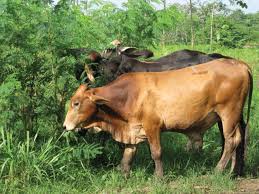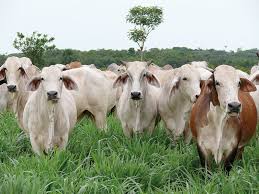The much wider gap between performance of tropical livestock species and those of the temperate climate demand a critical review and consideration by learners and practitioners of animal production. A foundation course in animal production, such as this, requires students to be acquainted with the existence of the performance gap which has often been attributed to genetic, environmental, and genetic-environment interaction variables.
The essence of familiarisation with this challenge may stimulate the desire to finding ways of meeting domestic demands and reducing the performance gap. The identity and measures of productivity of breeds of livestock in Nigeria compared with some exotic breed ought to agitate the minds of students as to what motive or factor underlies the disparity between production capacity of exotic and local breeds of stock.
Past Livestock Improvement Efforts

The temperate – zone countries particularly in Northwest Europe earlier commenced livestock improvement through general improvement of environment for livestock such that at the beginning of 19th century improvement efforts were directed towards taking economic advantages of livestock.
Economic advantages were easily achieved as at then by improving on the housing facilities for livestock to prevent adverse climatic effects. Advances in livestock breeding started in 19th century particularly in the United Kingdom. The advances were however based on limited records, acute observation and trial-and-error efforts compared to modern genetic theory being used these days.
Science of genetics began to gain recognition in the early 20th century revolutionising animal breeding with the application of genetic principles combined with new knowledge on physiology of reproduction. Today, the pace of progress is tremendous with the advent of knowledge on molecular structure of DNA (Deoxyribonucleic Acid) and location of genes on the chromosomes. Genetic engineering will soon take animal production to a new stage.
In contrast, these practices are extremely slow to be applied in the tropical countries. Although livestock owners in the tropic developed rules or customs towards better breeding of their stock, but these seem to be haphazardly applied and uncontrolled probably due to inefficient grasp of the challenge or its solution.
As such efforts to improve the productivity of livestock in the tropics have always moved in a cyclic manner perhaps for a few reasons. One, the original domestication of most species probably occurred in the tropics and/or subtropics. Two, large movement of stock from their origin of domestication to isolated areas resulted in natural development of characteristics that adapted them to their new environment.
Three, breeding of animals in some cultures was restricted to cultural, magical or religious rather than economic perspective. Four, importation of improved breeds from Europe to the Americas thrived in the temperate climate but parallel importation from Europe to the tropical countries of Africa and Asia was not successful except for Criollo cattle breed of tropical Central and South America.
After a few attempts to improve the genetic make-up of stock, a new stream of importation to Africa followed without success, until it was realized that highly productive European and American breeds cannot thrive in tropical Africa and Asia unless epizootic diseases are controlled and nutrition and management are improved.
Read Also: Major Genetic Differences between Tropical and Temperate Livestock Breeds

